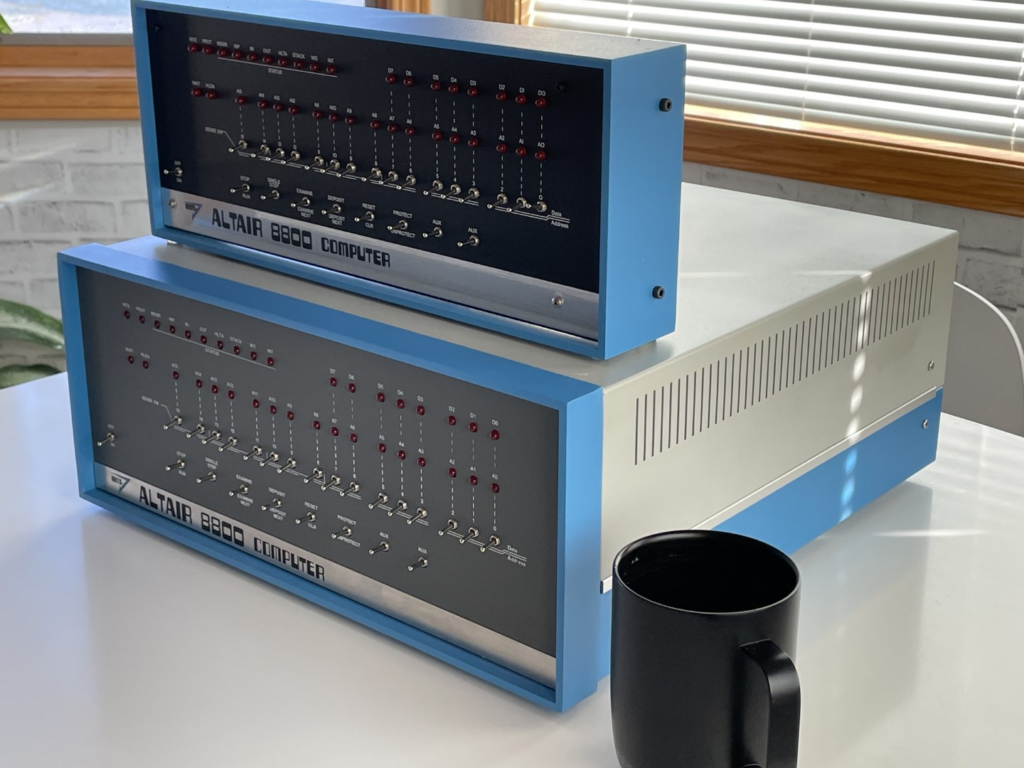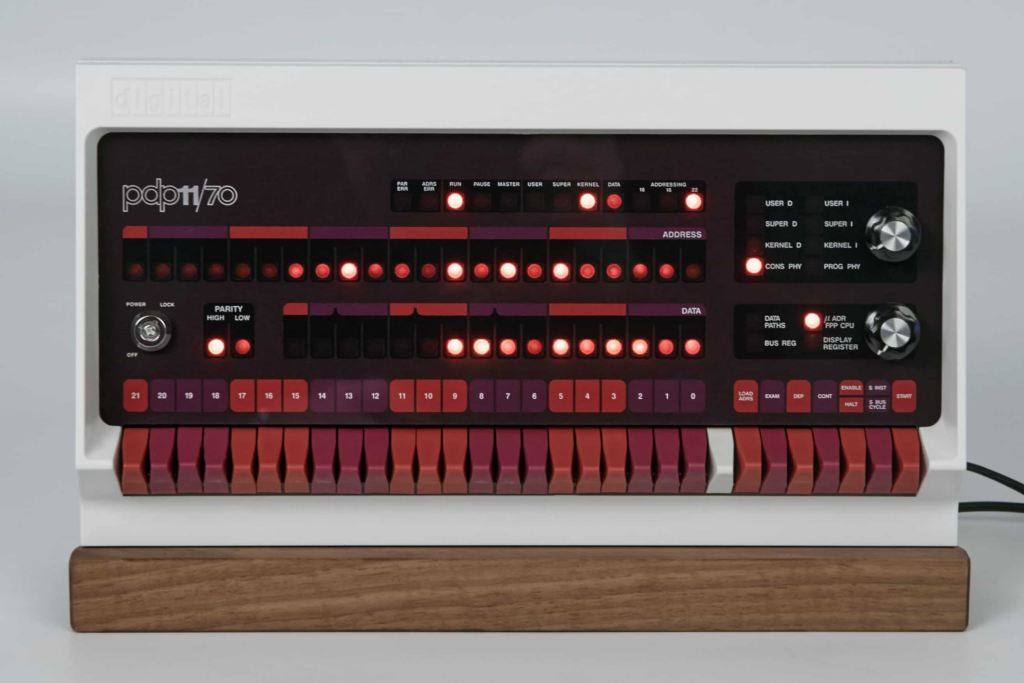Could it be? Yes, it could.
–Stephen Sondheim, “Something’s Coming”
Somethin’s comin’, somethin’ good, if I can wait.
[Personally I prefer the version by Yes, but that’s just me]
I’ve been wanting to get a project or two I can solder and tinker with, because I’m getting that itch. I’d keep looking at things like various radio kits, but the biggest problem with kit radios is that they tend to be directed at CW operators which I am not – even the most powerful kit radio I could easily grab ahold of would do max 10W SSB, and that’s not enough to make meaningful contacts for me. So while it would be fun to assemble and test, I probably wouldn’t use it much after that. And recently I realized that I’d been saving up some money but without a goal to save for. That can be a dangerous combination, so I went looking for something that would scratch that itch to build and tinker again.
Enter some retro computing items. Some years ago when looking to populate my wish list with more items, I stumbled across some things that I didn’t know existed. Of course there’s old computing stuff out there, and I love playing with it, but some of it is too old to be reliably dealt with – too hard to source the parts, or too expensive, too big, all kinds of reasons it’s not a Good Idea. Well, some enterprising folks out there have come up with good ways to handle that via emulation and replicas, and I am here for it. The first one on the list is a replica of the IMSAI 8080, which many will know as the computer that David Lightman uses in the movie WarGames.

This replica is done by The High Nibble (love that name) and is available on his website. One of the main reasons I want one of these is of course the movie factor, but also because I love tinkering with old hardware, and why not? It has blinkenlights. That makes it better. One downside to this particular kit though is that it’s not readily available from what I can tell – the order form is more of an interest form, and after you submit your address you’ll get an email when a kit is available to purchase. It’s also a little more expensive than other items on my list, which is not a mark against this kit at all – I think it’s worth every penny, I just didn’t want to spend that many of them on one item at this time. So this one will stay on my list for another day, hopefully soon.
What’s next? Well, the IMSAI was one of the first “computer clones” (those who remember the early 90s to 2000s may recall when things went from “IBM or Apple” to “Send In The Clones” as everyone started making mostly compatible hardware). The original that it copied was the Altair 8800, and I remember seeing them as well when I was first getting into computing. You may have too, as it’s a pretty iconic look.

Adwater & Stir (another awesome name) offers the Altair-Duino which comes in two flavors. One is pretty close to the original in terms of space and expandability, and the other is slightly smaller and much more shelf friendly (and cheaper). Since I’m more interested in tinkering and building, and don’t plan to add expansion cards at the moment (nor do I care to have it take up a lot of space on a desk or cart somewhere), the smaller “experimenter” fits the bill quite nicely. It keeps the cool factor between the blinkenlights and the panel switches, where you can actually “toggle in” an entire program if desired but not necessary since a bunch of stuff is preloaded on the Arduino inside for you to cheat and load very quickly. But if you want to bit bang on the panel, go for it – and that’s exactly the kind of thing I like to read about. Reading those pages, I also saw a comment at the bottom of one of them that gave me a head scratch (or maybe a record scratch):
I also have to say “thank you” to Oscar Vermeulen of Obsolescence Guaranteed for his recreation of the PDP-8, which got me on this quest to recreate historic computers.
PDP-8 I thought? I don’t know much about the DEC machines, but they had blinkenlights too.. and I remember seeing them in the background of various podcasts where Steve Gibson was a guest (such as “Security Now”). So I moused over to there, and found something I could really get behind: the PiDP-11/70

The PDP-11/70 was a computer from Digital Equipment Corporation and was instrumental in the design and creation of Unix. It’s also one of the last machines to still have a proper front panel with lights showing address and data information (later PDP-11s had their panels replaced with blank panels since after the boot sequence the switches and registers were typically not needed). As you may guess from the name, the brain of this one is a Raspberry Pi running the ‘simh’ emulation package, so while there’s the faithful recreation of the panel and operation there’s a lot more power internally to do other things, including running a full Unix if you so desire (nevermind the fact that the Pi itself runs Linux anyway).
So armed with all of this, what to do? Well, I counted up the savings I had sitting here and realized a bit of good news – I had enough for the PiDP-11 and the Altair-Duino. So I did what any self-respecting geek would do and ordered them both. Plus a new Raspberry Pi 4B since the only one I had sitting here is a 2B which, while it’s plenty powerful enough to run the emulator, doesn’t have built-in wi-fi (and the cost of a dongle is a portion of the cost of a whole Pi at that point). The Altair and the Pi will be here Saturday, and I hope early enough that I can get a good start working on it, while the PDP will arrive next Tuesday and probably have to wait until evenings and/or the weekend for its time to shine. I’ll be taking photos during the process to document it and share here, because.. well, this is just too freaking cool not to share. Oh, and if you’re curious about the term “blinkenlights”, it comes from a long line of posters and such that would be placed around machinery as a WWII-era joke. See an example below, or read the entry from The New Hacker’s Dictionary that explains it well.

Comments
Join the conversation on Bluesky